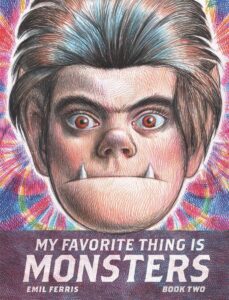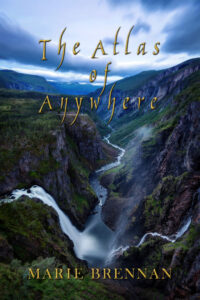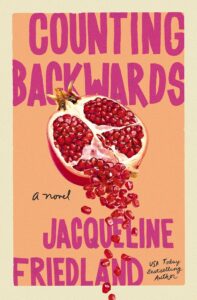This graphic novel took Emil Ferris something like seven years to write and draw, and it was honestly worth every minute. My only quibble with it is the idea that it somehow serves as a conclusion. Sure, it solves the murder, presented in the first volume, of who killed Anka. But the emotions are still very open-ended, with the ending of the book itself feeling far more transitory than conclusive.
 But I’m getting ahead of myself. The story follows a ten year-old named Karen, who views herself more as a monster (a la the Wolfman) than a little girl. She lives with her older brother Deeze in a Chicago townhouse divided into flats by floors, during the Civil Rights era of the 1960s. Her mother has recently died, and her father disappeared a long time ago. Deeze does what he feels he needs to do in order to support both himself and Karen.
But I’m getting ahead of myself. The story follows a ten year-old named Karen, who views herself more as a monster (a la the Wolfman) than a little girl. She lives with her older brother Deeze in a Chicago townhouse divided into flats by floors, during the Civil Rights era of the 1960s. Her mother has recently died, and her father disappeared a long time ago. Deeze does what he feels he needs to do in order to support both himself and Karen.
Karen herself is a complicated, fascinating creation. As a young lesbian and a keen-eyed, sensitive artist, she struggles with what society tells her about how she should feel and behave. In addition to feeling more comfortable as a monster than a little girl, she fancies herself a detective, and has set about solving the mystery of who killed her upstairs neighbor Anka. Her investigations take her on a meandering but impactful tour of Chicago, as she learns far more about her family than she ever suspected or feared, all while clinging to her faith in monsters to help keep her and her loved ones safe.
This is a powerful coming-of-age novel that works well even if you haven’t read the first book, as I haven’t — tho I strongly recommend going back and looking it up! In addition to exploring the culture and counterculture of mid 20th-century Chicago, this book also addresses the horrors of World War II through the voice of Anka, a Jewish Holocaust survivor who had to do unspeakable things to make it out alive. Told from Karen’s immersive viewpoint, we slowly learn the truth about the world and people around her, even as we can’t escape the essential empathy of our kind-hearted protagonist.









